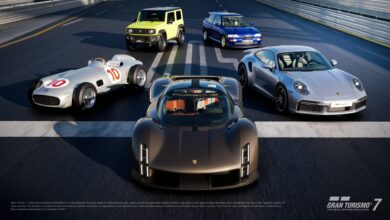The History Of SaGa, Square’s Weirdest, Bravest RPG Series

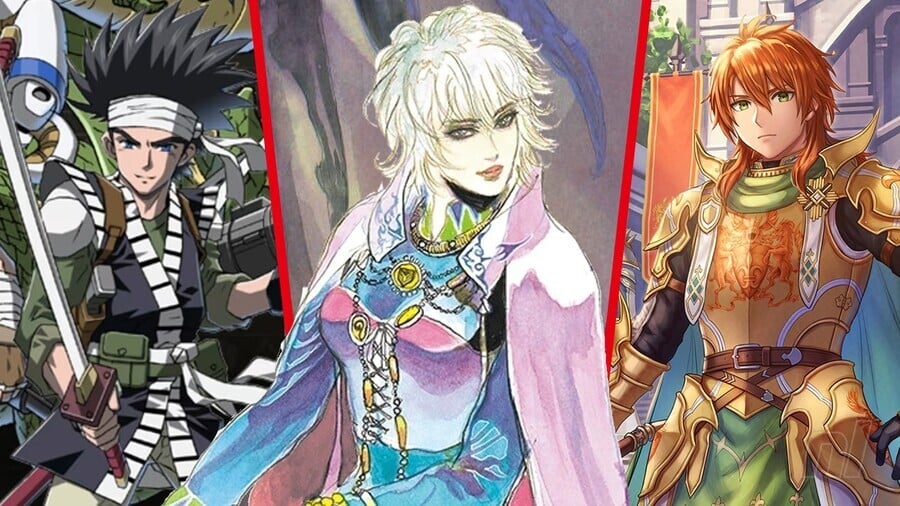
Final Fantasy. Kingdom Hearts. Mana. Dragon Quest. Chrono. Star Ocean. Valkyrie. Bravely. Square Enix has no shortage of RPG franchises under its belt, from those it’s developed in-house to beloved classics that it’s acquired over the years. But among all the space-faring action RPG and patisserie chef jobs, there’s one Square-developed franchise that manages to stand clear from the pack: SaGa.
SaGa made its mark on the world back in 1989 on the Game Boy, making it one of Square’s longest-running franchises. It’s never gained the popularity of its older cousin, yet SaGa has accumulated a die-hard following over the years for its dedication to being weird and different. Non-linear stories, ‘sparks’ and ‘glimmers,’ multiple playable protagonists, and multiple timelines are all par for the course here.
SaGa wouldn’t exist without one man in particular — Akitoshi Kawazu — so it’s only right that we start this deep dive into Square Enix’s weirdest series by looking at how the creator got his start.
Kawazu’s Saga
Akitoshi Kawazu was born on 5th November 1962 in Oguni, a small town on the isle of Kyushu on the southwest tip of Japan. Despite his surroundings, Kawazu, was not a quiet kid. “I was proactive, wanting to be in the limelight, and was a rowdy kid who wouldn’t hesitate to voice my opinion to adults,” he told Forbes back in 2017.

Growing up, Kawazu fell in love with sci-fi and video games – the Star Wars boom hit, Kawazu discovered the Apple II because of his love of Star Trek, and his favourite video game of all time is Ultima IV: Quest of the Avatar, which changed his perspective on video games.
Before he played Ultima IV, he felt that there were only two things a video game could provide: satisfaction in victory, or basking in the glory of completion. But upon meeting a dancer in-game, Kawazu had a revelation: despite being “low-resolution”, despite it being “a product of a person in Texas” on the other side of the world, this single interaction taught him that “it’s okay to offer other things of value outside of just winning or reaching a goal.”
Throughout school and college Kawazu’s love of gaming carried over to Space Invaders and tabletop — sometimes importing board games from North America, and even creating his own. As he told Jeremy Parish, he got his first taste of the games industry as a writer at the magazine Beep, where came across an ad for Suishō no Dragon, a Famicom Disk System game developed by Square, along with a job listing.
Despite having never heard of the company, he applied and even though the listing was closed he was asked to come in for an interview – first with Hiromichi Tanaka and then with Hironobu Sakaguchi, the “father” of a little series we’ll talk about in a bit. In 1985, he was hired and got his first video game credit on the 1987 NES title Rad Racer as a graphic designer.
Sakaguchi would soon put the wheels in motion on one of the most popular RPG franchises in the world, and Kawazu was a big part of that.
The Wild Rose
“Let’s aim to make a game that will surpass Enix’s Dragon Quest!” is how Kawazu recalled Sakaguchi’s initial idea for Final Fantasy.
He was put in charge of battle design, implementing the four elements (fire, earth, water, wind) that made up the four crystals and sticking to something he knew well – tabletop, Dungeons & Dragons, and traditional fantasy.
However, Kawazu’s real impact came with the game’s sequel – and you can’t talk about SaGa without talking about Final Fantasy II.
The first Final Fantasy has a traditional turn-based battle system, you pick from six different job classes, and each character levels up and learns skill based on the experience they gain from defeating enemies. Almost all of that was thrown out of the window for the sequel.

The team wanted a “more story-driven game” for Final Fantasy II, and that shaped the way the game played, too. “The system is more about nurture than nature now. You don’t choose what you are in the beginning. You make them grow in a certain way and then they’ll eventually go in a direction to become whatever you set them up to be,” Kawazu said in 2012.
In Final Fantasy II, characters don’t grow with experience points – they grow according to their actions. Attacks boost attack, expending magic increases your MP, and taking damage increases HP. Needless to say, Kawazu’s ideas didn’t stick around for Final Fantasy III or the rest of the series, but the idea wasn’t buried.
A Final Fantasy Legend
With the huge success of Tetris on the Game Boy, Square’s president Masafumi Miyamoto wanted the company to create something to rival the block-stacking puzzler. Akitoshi Kawazu, Koichi Ishii (creator of the Mana series and now president of Grezzo), and others at Square thought differently, and instead pitched what Square was becoming known for: an RPG.
Thus, Makai Toushi Sa・Ga, or SaGa, was born. Kawazu became lead director and designer, and with this new IP on a booming console, he “wanted to do things that Final Fantasy wouldn’t do or couldn’t do.”
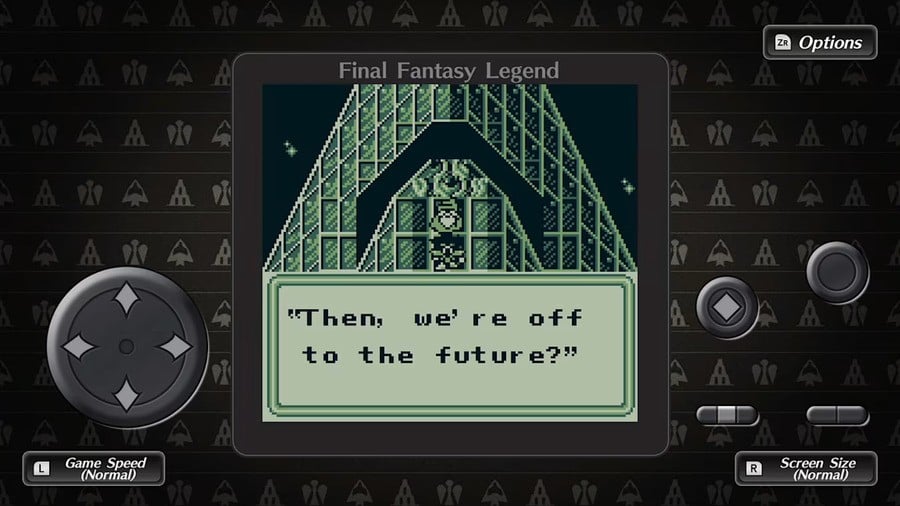
Know as The Final Fantasy Legend in the West, Kawazu and the team built on what they learned from FFII. But there were multiple ways they wanted to diverge from Square’s premiere RPG series. They didn’t want a story that centred on saving the world, settling on climbing a tower to reach paradise and – of course – defeat a god. Oh, and climbing up the tower, you could visit other worlds, and job classes were swapped in favour of different ‘Races’ – humans, monsters, and mutants.
Kawazu wanted something unique, but something that stuck to that “nurture” philosophy. Humans, for instance, can wear almost all types of equipment, but to increase their stats, they have to consume items that boost things like strength, defence, or even HP. Monsters, however, get stronger by eating meat, which is dropped by enemies in battle – and not only can the meat increase stats, but it can also change the monster’s sub-class.
For 1989, it was incredibly unique, and it’s still unique today. Retrospectively, it’s amazing that SaGa became Square’s first game to sell over a million copies, so of course SaGa 2: Hihou Densetsu (Final Fantasy Legend II) followed just a year later.
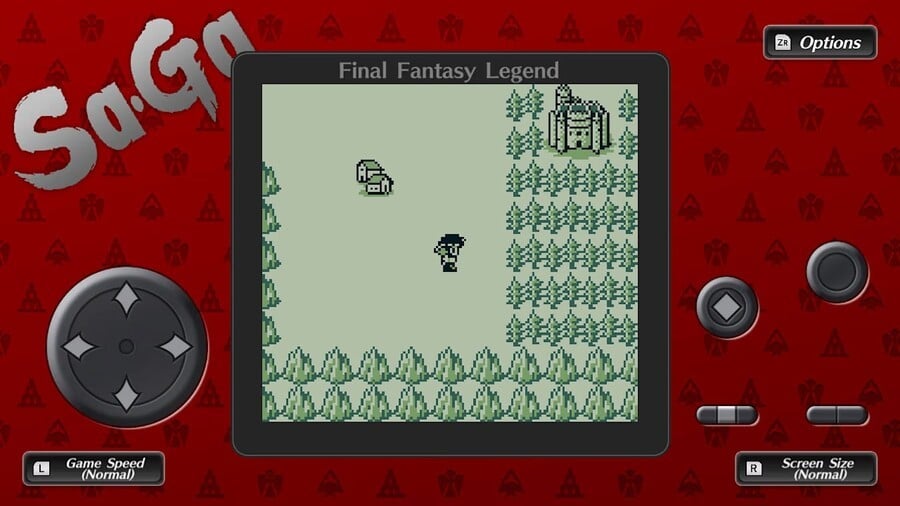
SaGa 2 follows roughly the same gameplay template as the previous game; you can visit multiple worlds, combat is largely the same – humans now level up like mutants and faster, while you can now choose what mutant mutations to keep – and you still pick from different races rather than classes. Robots were added, the world was designed to be “a little more bleak”, and it’s an improvement on the original in almost every single way.
SaGa 2 was another success and is often considered one of the best SaGa games. At the time, Nintendo approached Square about moving the series to the Super NES, but fan demand for a third SaGa game was strong. As such, the RPG giant decided to work on two games at once – Akitoshi Kawazu would work on a SNES title, while a brand new Osaka-based team would work on what became SaGa 3: Jikuu no Hasha (Final Fantasy Legend III).
This third entry is the most accessible of the trilogy, but it also scraps a lot of Kawazu’s ideas from the first two. While the world is much more expansive, and you can travel between dimensions and eras using an upgradeable airship, experience points make a return, and character races were simplified so you could upgrade Humans into other races.
Fortunately for fans, SaGa wasn’t abandoning its more esoteric elements, as Kawazu was busy working on the 16-bit game.
Romancing the SaGa
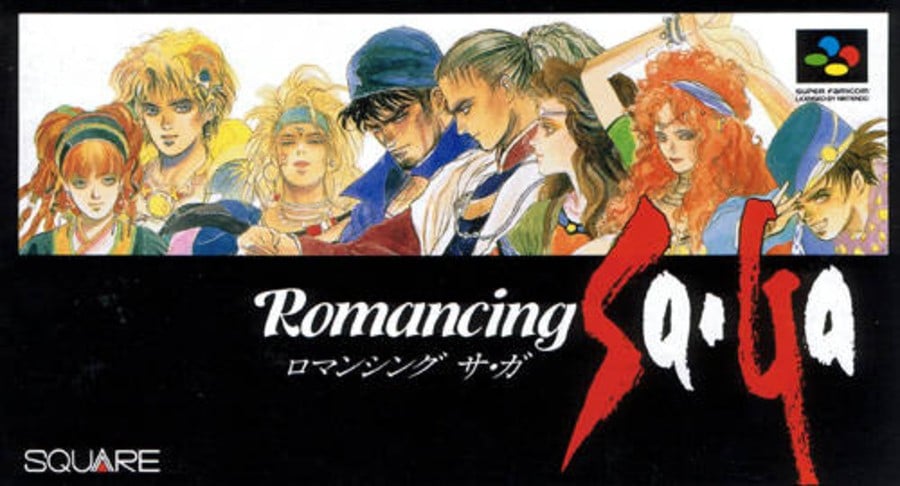
With the Game Boy entries, Kawazu said the team “placed emphasis on being able to play casually,” but with Romancing SaGa he “aimed for a fantasy role-playing game that adults could enjoy.” Out went the more sci-fi-inspired settings, robots, and mechanical weapons and in came a more “romantic” setting. The new name, according to Kawazu, may actually have come from 1986’s Romancing the Stone – as suggested by SaGa 2 debugger and future Live A Live scenario designer Nobuyuki Inoue.
Regardless of its origins, everything from the art, visuals, music, and setting is ‘romantic,’ in a literary sense. From its pastel-hued art and pixels to the more traditional fantasy setting, Romancing SaGa feels different from its predecessors, even with its non-linear progression. You’ve now got eight different protagonists, all of which have their own personal narratives that eventually tie into the main goal: to collect the Fatestones and defeat Saruin, an imprisoned god who wants to destroy the world.
Romancing SaGa is where the ‘core’ SaGa staff were established. Kawazu would direct this trilogy and go on to produce the rest of the series; Kenji Ito, co-composer on SaGa 2 (alongside one Nobuo Uematsu), would become the series’ main composer; and Tomomi Kobayashi’s first big break was on Romancing SaGa, and she’d stick around until SaGa Emerald Beyond.

The game released in January 1992 on the Super Famicom and was a success, so many of the key staff were moved over to help on the next Final Fantasy game – Final Fantasy V. That allowed Kawazu to cook up ideas. Back in 2019, he told us that “com[ing] up with a good idea for a new design that could only work on these new platforms” excites him, and while Romancing SaGa takes advantage of that, nowhere is that felt more than in its direct sequel.
Romancing SaGa 2 doubles down on the open-ended structure with a whole kingdom that you can develop. This game is also where the Glimmer – also called ‘sparking’ – was introduced. Characters will sometimes get a little lightbulb above their head, meaning they’re about to learn or master a new skill. It’s sort of random, depending on the monster you’re fighting and the difficulty of the technique. Life Points also made their debut, and in most games, this is akin to a permadeath – LP goes down if a character loses all their health, or if they’re hit when they’re unconscious and at 0, that’s it. They’re gone.
There is, however, one mechanic entirely unique to Romancing SaGa 2: the Generational system. Eventually, the player character will pass on, and you must choose a new ruler to carry on this legacy and continue your plight against the Seven. The new ruler will get a number of skills and spells from the previous ruler, passed on by a magic spell.
Incredibly, just 20 people worked on Romancing SaGa 2, and the team was made up of a set of future Square all-stars: Akihiko Matsui, who later went on to co-direct Chrono Trigger; Yasunori Mitsuda worked on the game’s sound effects before going on to compose for the Chrono series, Xenogears, and, eventually, Xenoblade Chronicles; and Tetsuo Mizuno, founder of the now-defunct AlphaDream, was the game’s producer.
Romancing SaGa 2 is the best-selling of the Super Famicom trilogy, shifting over 1.5 million copies in Japan alone. Accompanied by guidebooks and a manga, it’s clear the second game hit a nerve with hardcore Japanese players.
Interestingly, then, 1995’s Romancing SaGa 3 goes back to the first game’s structure, abandoning the generation system and giving the player eight protagonists to pick from. Like SaGa 3 before it, Romancing SaGa 3 is probably the easiest game to ‘get into’ this trilogy, but it proved to be difficult to develop, as the team originally looked to create a sequel to the first game, while Kawazu wanted to make something wholly unique.
“At the time, we were discussing whether RPGs really have to feature battles,” Kawazu told Dengeki Online in 2014. “So we wondered if we could add something to RPGs that could replace battles.” Combat is still there, of course, but ‘extra’ activities bolster Romancing SaGa 3. Mikhail, for example, has his own mini-war campaign alongside the main RPG narrative, and Thomas can use trading to progress. Some sidequests saw characters taken out of the party, while others unlocked new areas.
Unfortunately, the West wouldn’t get to see any of these grand ideas until the PlayStation 2 remake of Romancing SaGa, known as Minstrel Song, and the 2017 and 2019 remasters on Switch. However, even with the SNES entries skipping our part of the world, SaGa would soon return to our shores.
New Frontiers
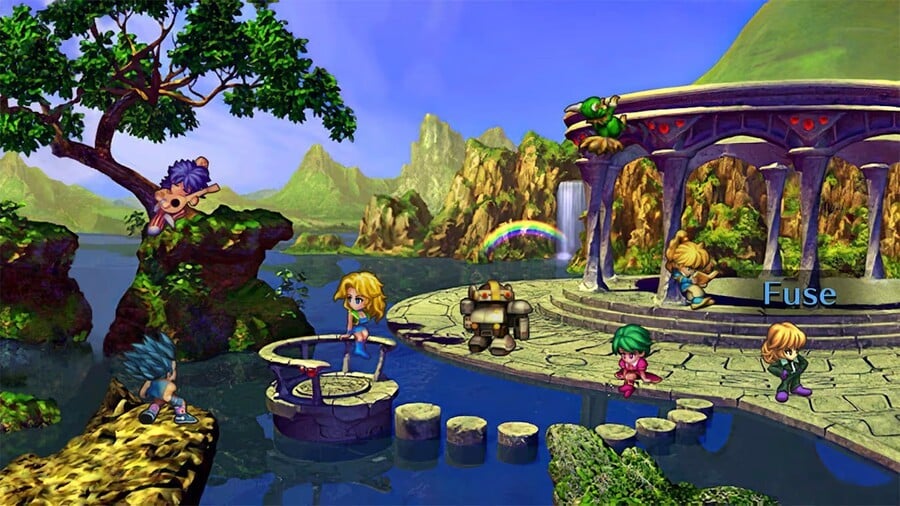
SaGa Frontier jumped ship from Nintendo to Sony with the rest of Square’s catalogue, and upon its release in 1998, it was the first entry to land in the West since Final Fantasy Legend III. Equally important, this was the first SaGa game to retain the ‘SaGa’ title worldwide.
SaGa Frontier is, again, completely different from Romancing SaGa and Game Boy SaGa. We’re back to a science fantasy world, here called The Regions. Kawazu shared his reasoning for changing things up again in the companion book, The Complete of SaGa Frontier (translated by Sevon at The Essence of Saga Frontier). “The three Romancing SaGa games took place in worlds with well-defined rules. I wanted to put a spin on that.”
The Regions is made up of multiple planets, and each of the seven (eight in the 2021 Remaster) is from one of those. Every planet has its own culture and technology, while every protagonist has their own story and different final boss.
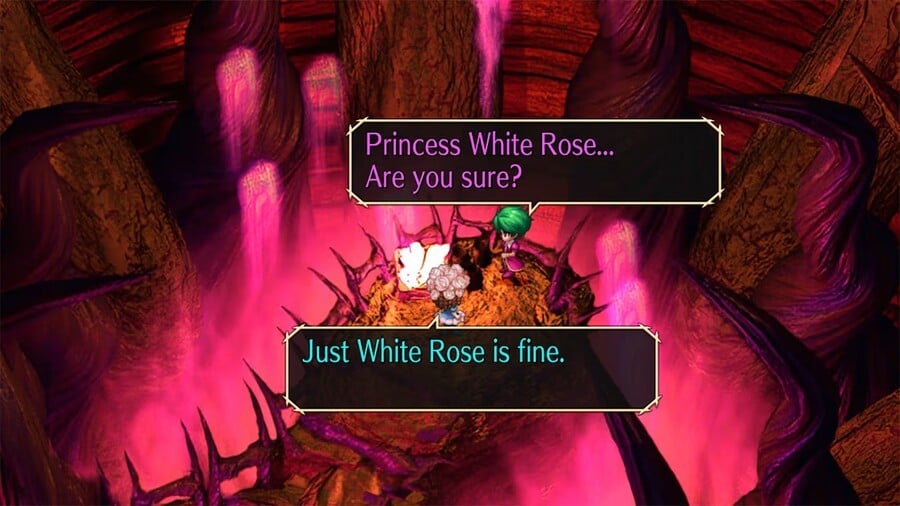
Even combat is expanded on in the form of combos, allowing characters to pair up when certain conditions are met. Triggering these isn’t always obvious, and Kawazu even admits the conditions are “quite strict,” but it adds a new level of party customisation to the series. Of course, skill glimmers are back, but you can also buy some spells in shops.
With its expanded focus on story and character, it’s not surprising that SaGa Frontier 2 follows up on that aspect. But, of course, it does many things differently. Introducing a new composer – Masashi Hamauzu, who would later go on to compose for Final Fantasy X, XIII, and VII Remake – it establishes a stunning watercolour art style for all of the game’s backgrounds. And while Frontier 2 limits you to just two protagonists, the story goes back to spanning multiple decades and re-embraces that fantasy setting, this time inspired by Germanic and Anglo-Saxon folklore.
With 2002’s Unlimited Saga, however, Kawazu is at his most experimental. Hamauzu returns to compose alongside system director Jyunichi Shinomiya, with Final Fantasy X artist Yusuke Naora joining the team. Easily the most divisive title in the series, it leans heavily on Kawazu’s love of board games, right down to exploration taking place on an actual board.
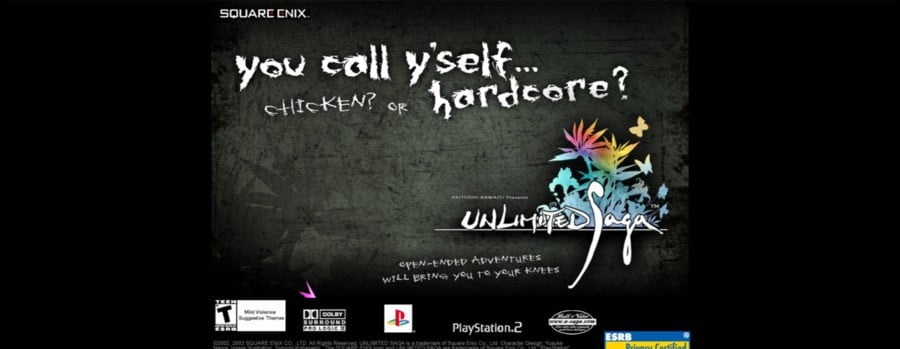
Every single action – whether it’s a movement, attack, or encounter – takes up a ‘turn’ and some missions and story events need to be completed in a certain number of turns. Add in weapon durability and a needlessly complicated equipment system and you have a game with willfully inscrutable mechanics that, reportedly, Kawazu pushed through anyway. Because that’s apparently how he likes them and there’s nobody to tell him he can’t.
Sing a Song
Kawazu’s bullishness was reflected in the gameplay, but also in the game’s critical reception, which was largely negative. And while SaGa Frontier would later be remastered for modern consoles, Frontier 2 and Unlimited SaGa are both MIA.
Luckily, every other title has seen a rerelease. The last game before a late-2000s, early-2010’s lull was that Romancing SaGa remake, Minstrel Song.
Arriving on PS2 in 2005 (and Switch in 2022), it took the bones of the Super Famicom game and transformed it into the first fully-3D SaGa. Many elements from other entries were retroactively added, such as combo attacks, LP, and sparking, and a quick save feature allowing players to make temporary saves in dungeons.
Despite Kawazu once commenting that “The more players say ‘Let’s make it a little easier,’ the more I want to make it a difficult game!” there was a concerted effort to make Minstrel Song a little more accessible. That’s even more the case with the 2022 remaster, where mini-maps and a fast-forward function were added. New recruitable characters and enhanced bosses just sweeten the deal for fans.
The PS2 version reviewed poorly in the West, and the series fell into a bit of a hiatus. A new console game wouldn’t land until 2016 in Japan – 11 years after Minstrel Song – but Kawazu had been jumping between projects in the meantime.
Never one to rest on his laurels – having worked on Legend of Mana, Racing Lagoon, and Final Fantasy: Crystal Chronicles in the preceding years as producer – Kawazu would go on to help with Final Fantasy XII, before sticking with the Crystal Chronicles series for a number of games, and co-writing on The Last Remnant, a 2008 RPG for Xbox 360.
SaGa would return in 2012 with Emperors SaGa, a mobile ‘social game’ that uses digital playing cards in combat. The genre was popular at the time in Japan, but producer Takehiro Ando admitted to Polygon in 2013 that he was “pretty nervous” about putting SaGa into that framework. It was popular in Japan, but it never left the country and the service was shut down in 2017.
Imperial SaGa followed in 2015, another Japanese exclusive and a browser-based RPG. It was more traditionally SaGa, with a world map to explore and turn-based combat and levelling that was entirely action-based. Waning support for Adobe Flash meant the game was shut down in late 2019, with a sequel released soon after.
Good Grace
SaGa’s quieter years were coming to an end in the mid-2010s, as alongside the announcement of Imperial SaGa, a brand new SaGa game was revealed – SaGa Scarlet Grace. Co-developed by Business Division 3, Studio Reel, and Opus, Scarlet Grace was initially a Japanese exclusive, launching on the PS Vita in 2016. Kawazu wanted to see how it was received in Japan before releasing it worldwide, and ultimately the team delivered an expanded version on multiple platforms overseas which launched in 2019 as SaGa Scarlet Grace: Ambitions.
Before that, Romancing SaGa 2 made its Western debut in 2017, and it felt like the tide was turning in the West for SaGa. “I believe modern players won’t find this game jarring,” Kawazu told Forbes prior to release. And he was right. Longtime fans were being rewarded for waiting, while newcomers could finally find out what all the fuss was about.
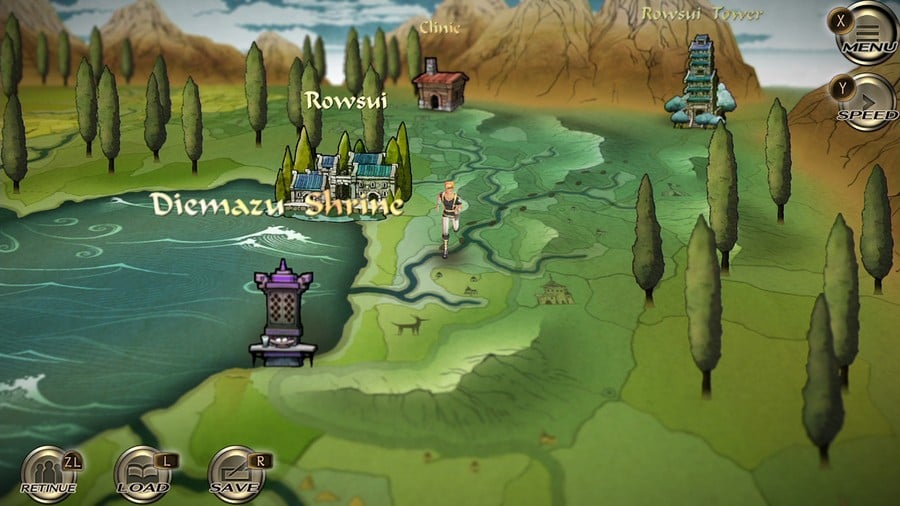
Back to Scarlet Grace: Ambitions, it’s a bit of a ‘greatest hits’ of SaGa. There are elements of every single game in here, but Scarlet Grace was also constrained by its budget, which resulted in dungeons being entirely scrapped in favour of chains of enemy encounters, a decision that Kawazu was “worried” about, but it was “unexpectedly well-received.” The game was originally meant to have eight playable characters, but that cast was cut down to four. And the world map was 2D, similar to a board game like Unlimited Saga, but the combat still contained that delicious slice of SaGa.
The new wrinkle here was the Timeline – similar to Final Fantasy X, you can see the turn order of every character and enemy at the bottom of the screen. You can affect that turn order depending on your own actions, which consume Battle Points. Your party shares Battle Points and, once they’re all consumed, the “turn” plays out. Combos, now called United Attacks, can reduce the cost of skills. In other words, it’s SaGa business as usual, but with a more refined and snappy system.
Bringing the game to the West proved to be quite the challenge, and 8-4 localiser Graeme Howard told Siliconera that it was around the same amount of work “as translating four modestly-sized RPGs” due to the game non-linear structure, multiple protagonists, and the different accents that each character has.
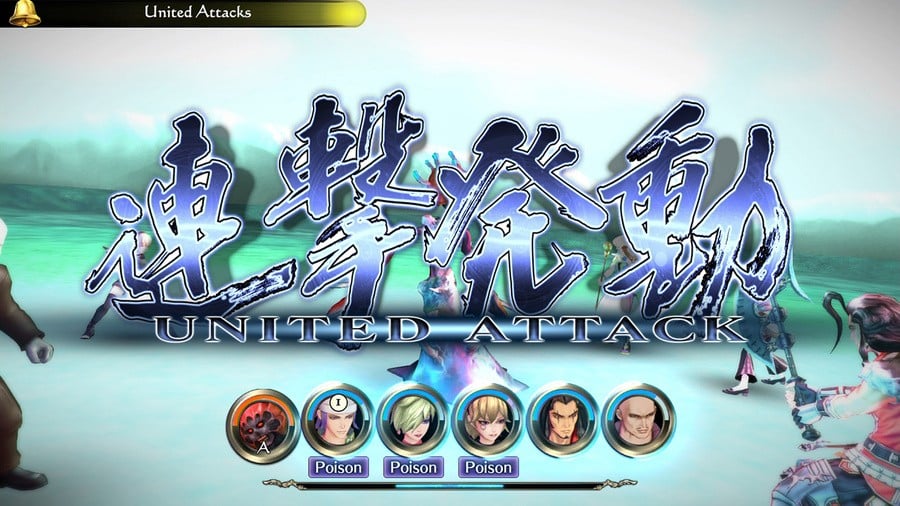
With Scarlet Grace: Ambitions reviewing well in the West, the series had found a new lease of life. Remasters of Romancing SaGa 3, SaGa Frontier, and Minstrel Song soon followed, each with improvements and additions to entice newcomers and satiate fans. Not only that, the Game Boy trilogy was rereleased as Collection of SaGa Final Fantasy Legend in 2020, with a speed-up function, background customisation, and screen magnification.
Another mobile game, Romancing SaGa Re:Universe (2018 in Japan, 2020 globally – although the game is about to shut down) also sneaked into the line-up, but SaGa’s biggest year, with two new games – one brand new, one full remake – was just around the corner.
Green Revenge
You could call 2024 the Year of SaGa, and SaGa Emerald Beyond is the game that truly cemented this series’ renaissance.
Released in April worldwide, Emerald Beyond is essentially a continuation of Scarlet Grace mechanically – there are no dungeons, the combat is similar but improved upon, and the world map is one big 2D-style plane. Kawazu wanted to build on the “pared-back RPG” experience from Scarlet Grace but, as he shared in a Square Enix interview, also wished to create a game where “the user interface, game world, and game mechanics were all intimately connected.”
Emerald Beyond revisits that science fantasy theme that SaGa Frontier and the Game Boy titles embraced; it encourages you to dive into the lore, playing through the game with all five characters and all six routes. There are multiple worlds, and races return, too, each with their own unique skills.
But it also charts a course to a new SaGa future – Satoshi Kuramochi, character designer on Scarlet Grace, is now lead artist, and while it does build upon Tomomi Kobayashi’s beautiful artwork, the colour scheme used in Emerald Beyond is unlike any other entry.
With its newfound audience, SaGa was continually growing, so colour the world surprised when Romancing SaGa 2: Revenge of the Seven – a full-blown 3D remake of the Super Famicom game – was announced during a Nintendo Direct that summer. Not only that, it was launching in October.
Even more than Minstrel Song, Revenge of the Seven is a complete visual overhaul of the original game. Shinichi Tatsuke, who produced the Trials of Mana remake, acted as producer here, and it gets a visual glow-up akin to that Seiken Densetsu 3 remake.
Tatsuke was given “free rein” by Kawazu to do what he liked with Romancing SaGa 2, but Tatsuke was keen to keep the original feel of the game intact, and so consulted with Kawazu on multiple elements. But one of the keys, along with the newer games, seemed to be to bring new fans into the fold.
Revenge of the Seven gives you multiple difficulties to choose from, new episodes featuring the Seven Heroes – the game’s main “villains” – and there are now markers on the map to show you where you can go next. You can check on the status of your kingdom at any time from the menu rather than travelling back to Avalon. And you can now force your emperor to abdicate, thereby passing on the skills and stats to one of six characters, rather than four.
Even the combat, which remains essentially the same as the Super Famicom version, has received some modernisations. Enemy weaknesses are visible in battle, and you can see enemy and party turn orders at the top, similar to Scarlet Grace and Emerald Beyond.
It almost looks and feels like a new game, but there’s a distinct flavour that reminds you that this is a classic SaGa game, Glimmers and all. It might not hit 100% with everyone, but the game was ahead of its time in 1993, and in many ways, it’s still ahead of its time in 2024. Long live the SaGa Empire, says Square Enix.
What Lies Beyond
With this SaGanissance, the future is limitless, though we don’t actually know what’s next for the series.
Back in 2021, around the release of SaGa Frontier Remastered, Akitoshi Kawazu told viewers on a launch stream that SaGa Frontier 2 and Unlimited SaGa (Minstrel Song was also mentioned, but that has since been rereleased) had been “left out,” but that the team wants to “somehow release these titles, so that everyone can play them anytime.”
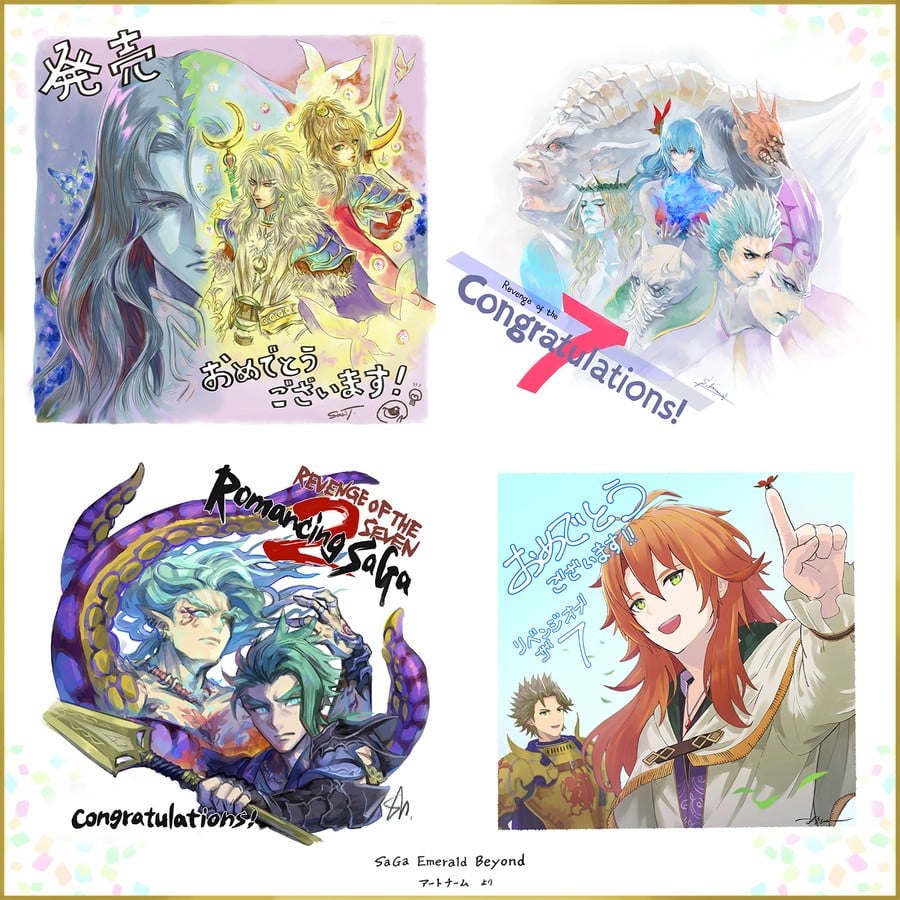
That was three years ago, and we’ve received multiple SaGa games, new and old, since. Listings of SaGa Frontier 2 for Switch have appeared online, so it’s probably only a matter of time before the whole SaGa series is playable on modern consoles.
The only thing we can say for certain is that the future of SaGa is looking very, very bright indeed.
Have you jumped into any of the SaGa games? What would you like to see next? Let us know in the comments.




